Alexander Podolskiy
Commute Your Domains: Trajectory Optimality Criterion for Multi-Domain Learning
Jan 26, 2025



Abstract:In multi-domain learning, a single model is trained on diverse data domains to leverage shared knowledge and improve generalization. The order in which the data from these domains is used for training can significantly affect the model's performance on each domain. However, this dependence is under-studied. In this paper, we investigate the influence of training order (or data mixing) in multi-domain learning using the concept of Lie bracket of gradient vector fields. By analyzing the infinitesimal effects of changing the training order, we identify regions in the parameter space where altering the order between two training domains can benefit the target loss. We validate the predictions of our theoretical framework on the influence of training order (or data mixing) both on a toy example and bilingual LLM pre-training.
Efficient Grammatical Error Correction Via Multi-Task Training and Optimized Training Schedule
Nov 20, 2023Abstract:Progress in neural grammatical error correction (GEC) is hindered by the lack of annotated training data. Sufficient amounts of high-quality manually annotated data are not available, so recent research has relied on generating synthetic data, pretraining on it, and then fine-tuning on real datasets; performance gains have been achieved either by ensembling or by using huge pretrained models such as XXL-T5 as the backbone. In this work, we explore an orthogonal direction: how to use available data more efficiently. First, we propose auxiliary tasks that exploit the alignment between the original and corrected sentences, such as predicting a sequence of corrections. We formulate each task as a sequence-to-sequence problem and perform multi-task training. Second, we discover that the order of datasets used for training and even individual instances within a dataset may have important effects on the final performance, so we set out to find the best training schedule. Together, these two ideas lead to significant improvements, producing results that improve state of the art with much smaller models; in particular, we outperform the best models based on T5-XXL (11B parameters) with a BART-based model (400M parameters).
Sinkhorn Transformations for Single-Query Postprocessing in Text-Video Retrieval
Nov 14, 2023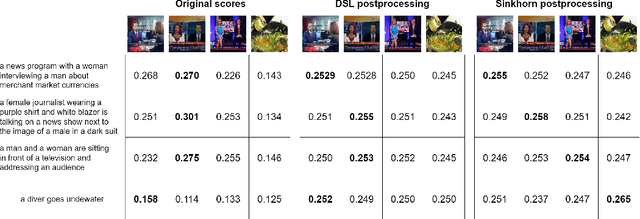
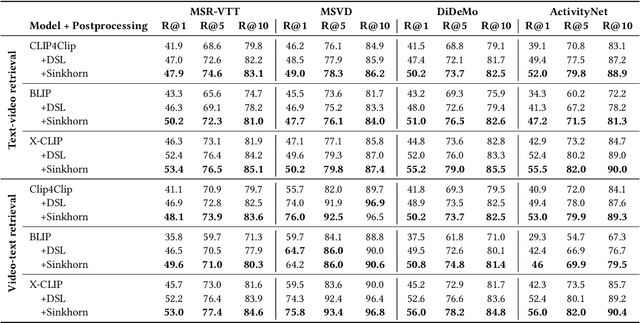
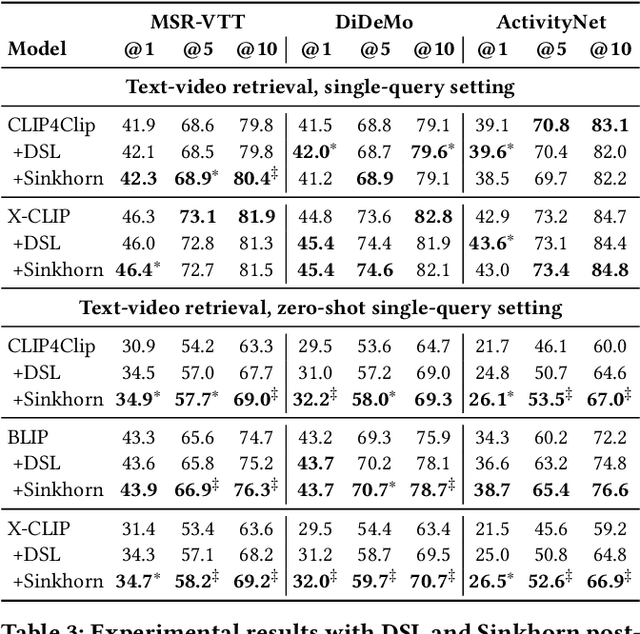
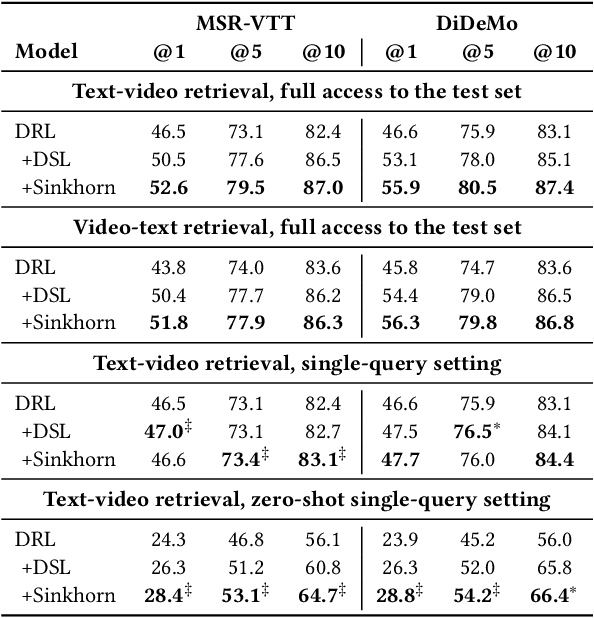
Abstract:A recent trend in multimodal retrieval is related to postprocessing test set results via the dual-softmax loss (DSL). While this approach can bring significant improvements, it usually presumes that an entire matrix of test samples is available as DSL input. This work introduces a new postprocessing approach based on Sinkhorn transformations that outperforms DSL. Further, we propose a new postprocessing setting that does not require access to multiple test queries. We show that our approach can significantly improve the results of state of the art models such as CLIP4Clip, BLIP, X-CLIP, and DRL, thus achieving a new state-of-the-art on several standard text-video retrieval datasets both with access to the entire test set and in the single-query setting.
GEC-DePenD: Non-Autoregressive Grammatical Error Correction with Decoupled Permutation and Decoding
Nov 14, 2023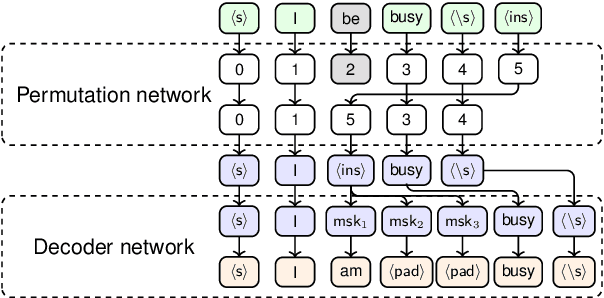
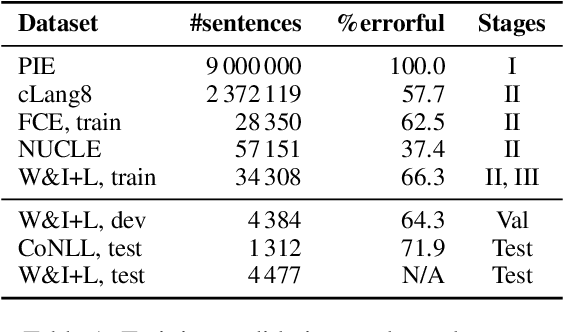

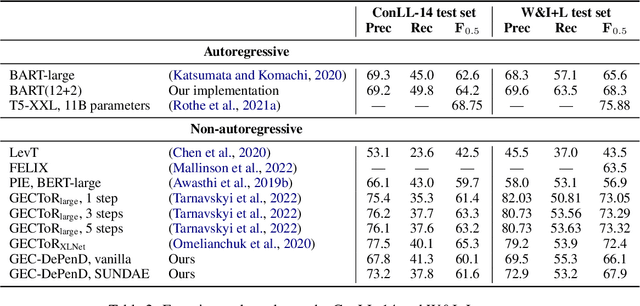
Abstract:Grammatical error correction (GEC) is an important NLP task that is currently usually solved with autoregressive sequence-to-sequence models. However, approaches of this class are inherently slow due to one-by-one token generation, so non-autoregressive alternatives are needed. In this work, we propose a novel non-autoregressive approach to GEC that decouples the architecture into a permutation network that outputs a self-attention weight matrix that can be used in beam search to find the best permutation of input tokens (with auxiliary {ins} tokens) and a decoder network based on a step-unrolled denoising autoencoder that fills in specific tokens. This allows us to find the token permutation after only one forward pass of the permutation network, avoiding autoregressive constructions. We show that the resulting network improves over previously known non-autoregressive methods for GEC and reaches the level of autoregressive methods that do not use language-specific synthetic data generation methods. Our results are supported by a comprehensive experimental validation on the ConLL-2014 and Write&Improve+LOCNESS datasets and an extensive ablation study that supports our architectural and algorithmic choices.
PanGu-Σ: Towards Trillion Parameter Language Model with Sparse Heterogeneous Computing
Mar 20, 2023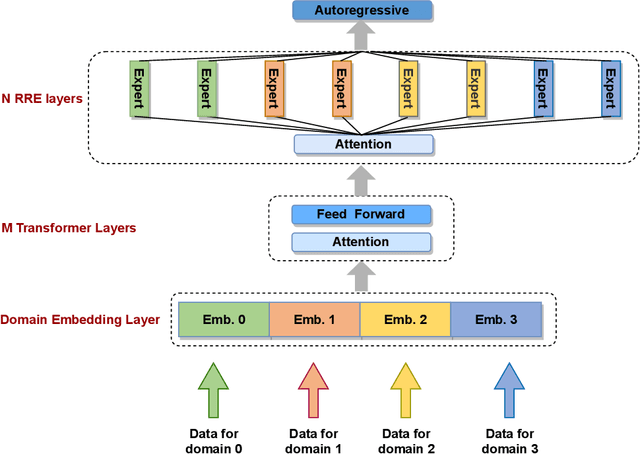
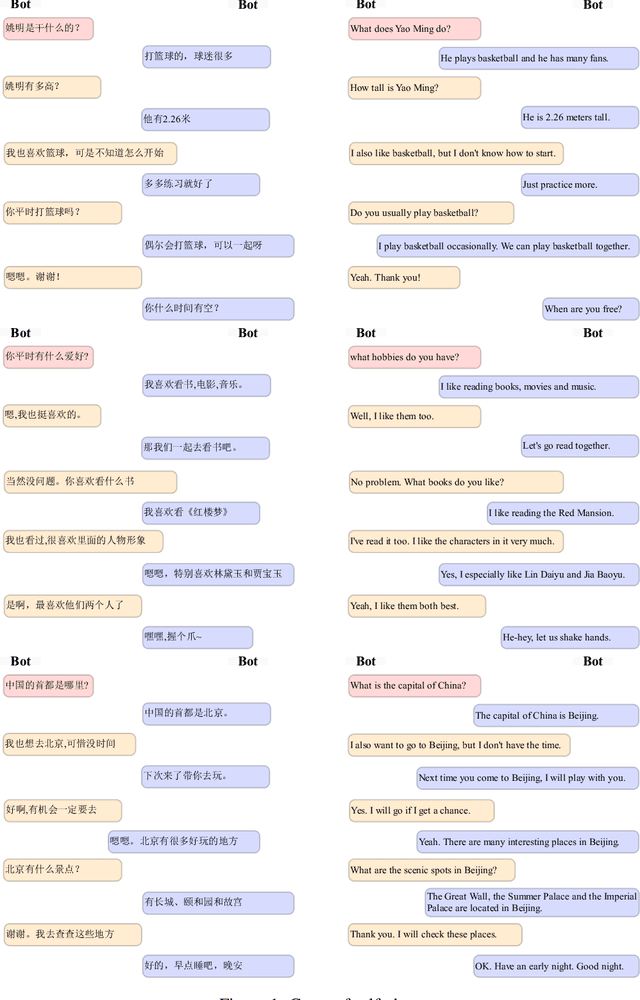
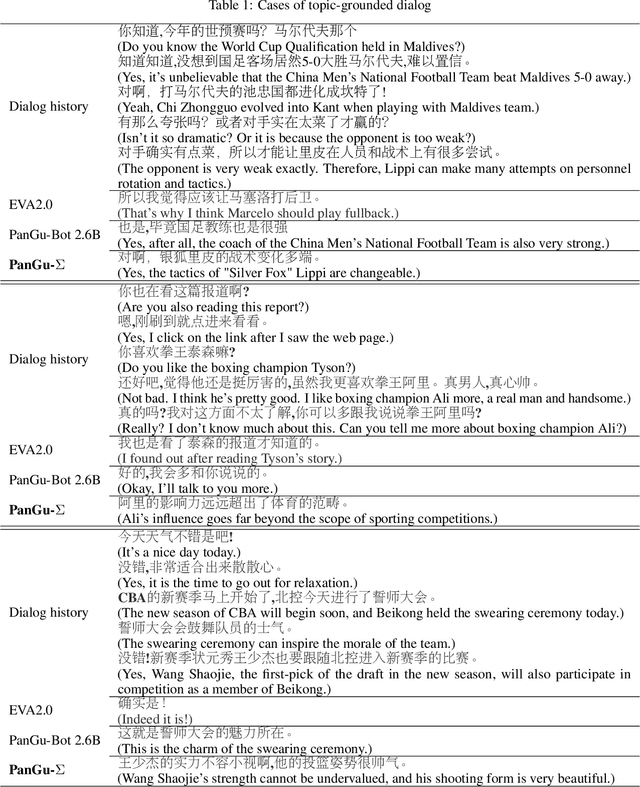
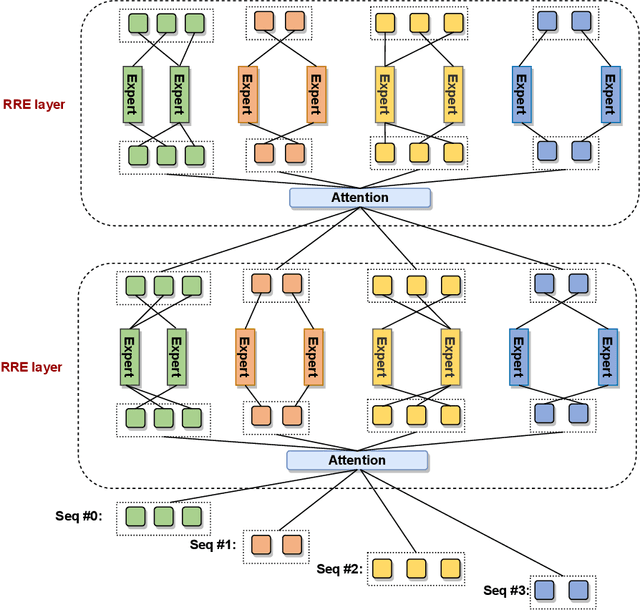
Abstract:The scaling of large language models has greatly improved natural language understanding, generation, and reasoning. In this work, we develop a system that trained a trillion-parameter language model on a cluster of Ascend 910 AI processors and MindSpore framework, and present the language model with 1.085T parameters named PanGu-{\Sigma}. With parameter inherent from PanGu-{\alpha}, we extend the dense Transformer model to sparse one with Random Routed Experts (RRE), and efficiently train the model over 329B tokens by using Expert Computation and Storage Separation(ECSS). This resulted in a 6.3x increase in training throughput through heterogeneous computing. Our experimental findings show that PanGu-{\Sigma} provides state-of-the-art performance in zero-shot learning of various Chinese NLP downstream tasks. Moreover, it demonstrates strong abilities when fine-tuned in application data of open-domain dialogue, question answering, machine translation and code generation.
Always Keep your Target in Mind: Studying Semantics and Improving Performance of Neural Lexical Substitution
Jun 07, 2022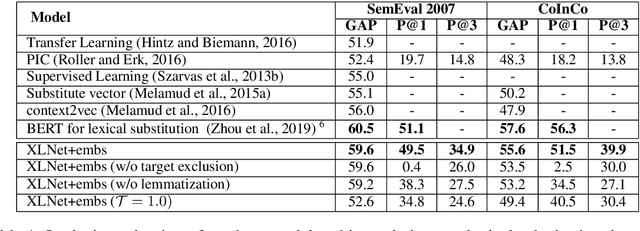
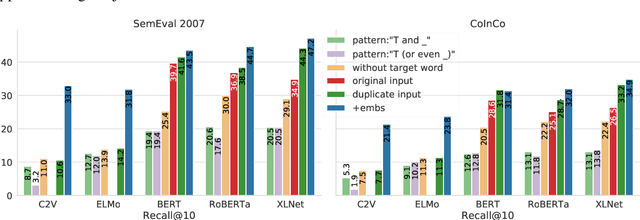
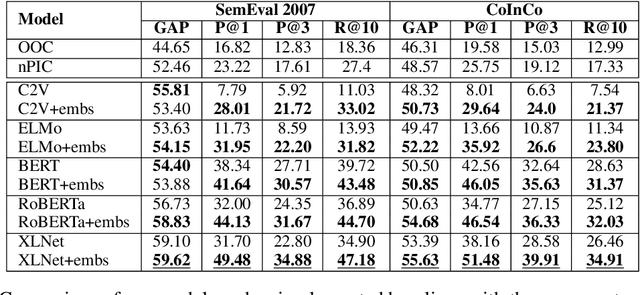
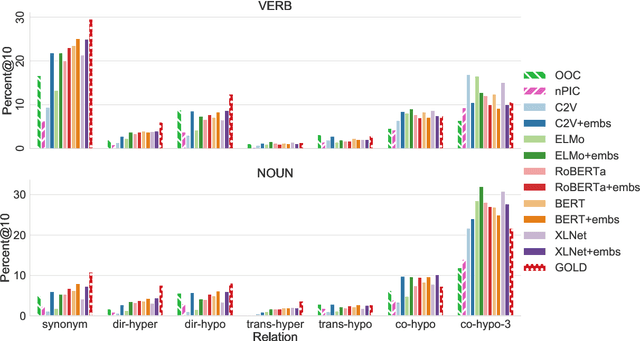
Abstract:Lexical substitution, i.e. generation of plausible words that can replace a particular target word in a given context, is an extremely powerful technology that can be used as a backbone of various NLP applications, including word sense induction and disambiguation, lexical relation extraction, data augmentation, etc. In this paper, we present a large-scale comparative study of lexical substitution methods employing both rather old and most recent language and masked language models (LMs and MLMs), such as context2vec, ELMo, BERT, RoBERTa, XLNet. We show that already competitive results achieved by SOTA LMs/MLMs can be further substantially improved if information about the target word is injected properly. Several existing and new target word injection methods are compared for each LM/MLM using both intrinsic evaluation on lexical substitution datasets and extrinsic evaluation on word sense induction (WSI) datasets. On two WSI datasets we obtain new SOTA results. Besides, we analyze the types of semantic relations between target words and their substitutes generated by different models or given by annotators.
* arXiv admin note: text overlap with arXiv:2006.00031
Revisiting Mahalanobis Distance for Transformer-Based Out-of-Domain Detection
Jan 11, 2021Abstract:Real-life applications, heavily relying on machine learning, such as dialog systems, demand out-of-domain detection methods. Intent classification models should be equipped with a mechanism to distinguish seen intents from unseen ones so that the dialog agent is capable of rejecting the latter and avoiding undesired behavior. However, despite increasing attention paid to the task, the best practices for out-of-domain intent detection have not yet been fully established. This paper conducts a thorough comparison of out-of-domain intent detection methods. We prioritize the methods, not requiring access to out-of-domain data during training, gathering of which is extremely time- and labor-consuming due to lexical and stylistic variation of user utterances. We evaluate multiple contextual encoders and methods, proven to be efficient, on three standard datasets for intent classification, expanded with out-of-domain utterances. Our main findings show that fine-tuning Transformer-based encoders on in-domain data leads to superior results. Mahalanobis distance, together with utterance representations, derived from Transformer-based encoders, outperforms other methods by a wide margin and establishes new state-of-the-art results for all datasets. The broader analysis shows that the reason for success lies in the fact that the fine-tuned Transformer is capable of constructing homogeneous representations of in-domain utterances, revealing geometrical disparity to out of domain utterances. In turn, the Mahalanobis distance captures this disparity easily.
A Comparative Study of Lexical Substitution Approaches based on Neural Language Models
May 29, 2020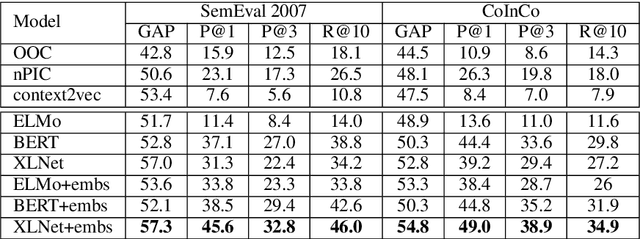
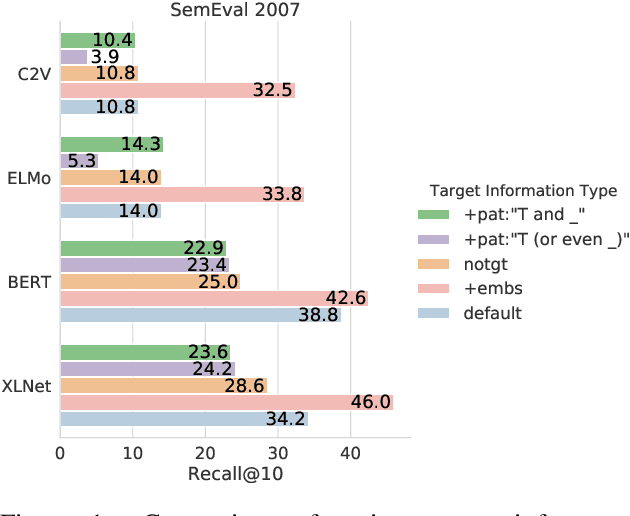
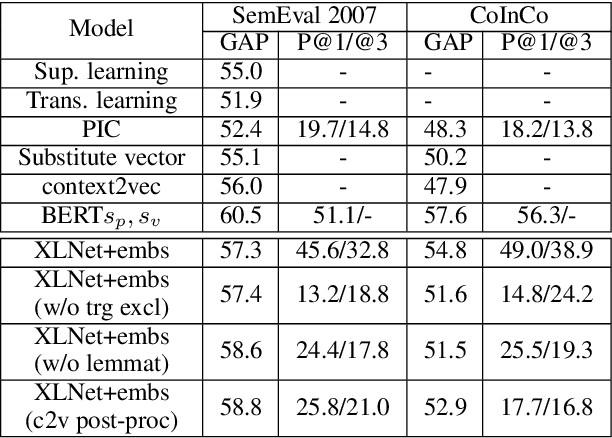
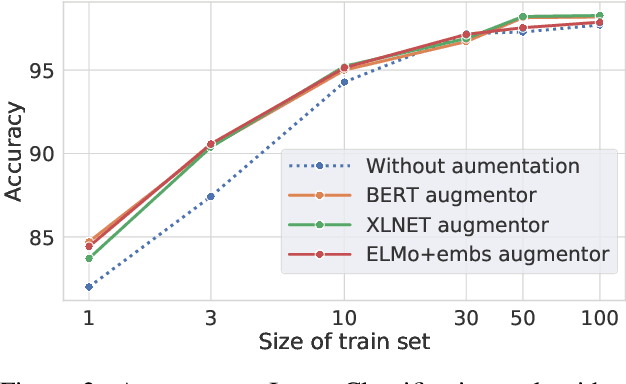
Abstract:Lexical substitution in context is an extremely powerful technology that can be used as a backbone of various NLP applications, such as word sense induction, lexical relation extraction, data augmentation, etc. In this paper, we present a large-scale comparative study of popular neural language and masked language models (LMs and MLMs), such as context2vec, ELMo, BERT, XLNet, applied to the task of lexical substitution. We show that already competitive results achieved by SOTA LMs/MLMs can be further improved if information about the target word is injected properly, and compare several target injection methods. In addition, we provide analysis of the types of semantic relations between the target and substitutes generated by different models providing insights into what kind of words are really generated or given by annotators as substitutes.
 Add to Chrome
Add to Chrome Add to Firefox
Add to Firefox Add to Edge
Add to Edge